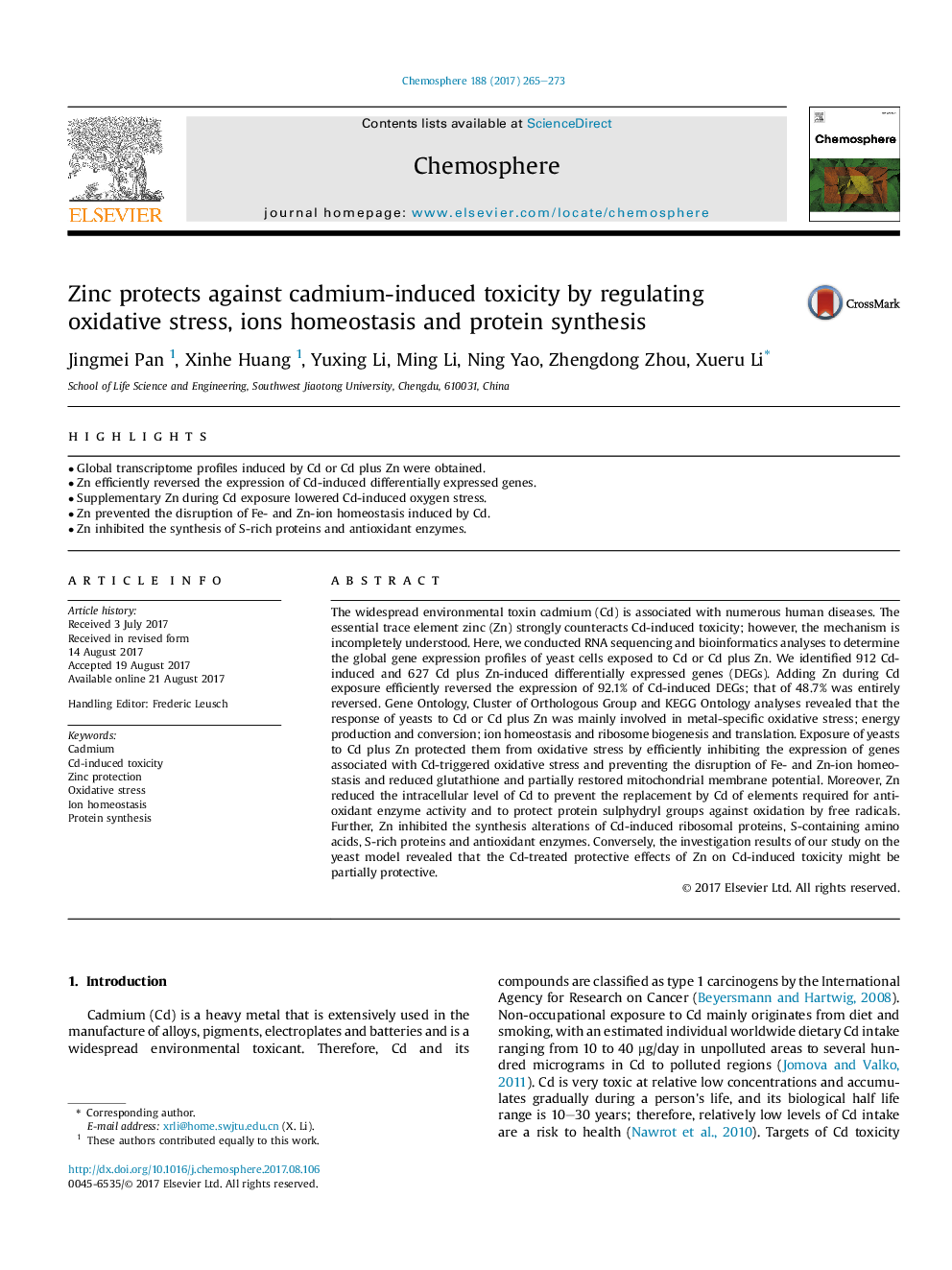| کد مقاله | کد نشریه | سال انتشار | مقاله انگلیسی | نسخه تمام متن |
|---|---|---|---|---|
| 5745837 | 1618783 | 2017 | 9 صفحه PDF | دانلود رایگان |
- Global transcriptome profiles induced by Cd or Cd plus Zn were obtained.
- Zn efficiently reversed the expression of Cd-induced differentially expressed genes.
- Supplementary Zn during Cd exposure lowered Cd-induced oxygen stress.
- Zn prevented the disruption of Fe- and Zn-ion homeostasis induced by Cd.
- Zn inhibited the synthesis of S-rich proteins and antioxidant enzymes.
The widespread environmental toxin cadmium (Cd) is associated with numerous human diseases. The essential trace element zinc (Zn) strongly counteracts Cd-induced toxicity; however, the mechanism is incompletely understood. Here, we conducted RNA sequencing and bioinformatics analyses to determine the global gene expression profiles of yeast cells exposed to Cd or Cd plus Zn. We identified 912 Cd-induced and 627 Cd plus Zn-induced differentially expressed genes (DEGs). Adding Zn during Cd exposure efficiently reversed the expression of 92.1% of Cd-induced DEGs; that of 48.7% was entirely reversed. Gene Ontology, Cluster of Orthologous Group and KEGG Ontology analyses revealed that the response of yeasts to Cd or Cd plus Zn was mainly involved in metal-specific oxidative stress; energy production and conversion; ion homeostasis and ribosome biogenesis and translation. Exposure of yeasts to Cd plus Zn protected them from oxidative stress by efficiently inhibiting the expression of genes associated with Cd-triggered oxidative stress and preventing the disruption of Fe- and Zn-ion homeostasis and reduced glutathione and partially restored mitochondrial membrane potential. Moreover, Zn reduced the intracellular level of Cd to prevent the replacement by Cd of elements required for antioxidant enzyme activity and to protect protein sulphydryl groups against oxidation by free radicals. Further, Zn inhibited the synthesis alterations of Cd-induced ribosomal proteins, S-containing amino acids, S-rich proteins and antioxidant enzymes. Conversely, the investigation results of our study on the yeast model revealed that the Cd-treated protective effects of Zn on Cd-induced toxicity might be partially protective.
Journal: Chemosphere - Volume 188, December 2017, Pages 265-273
